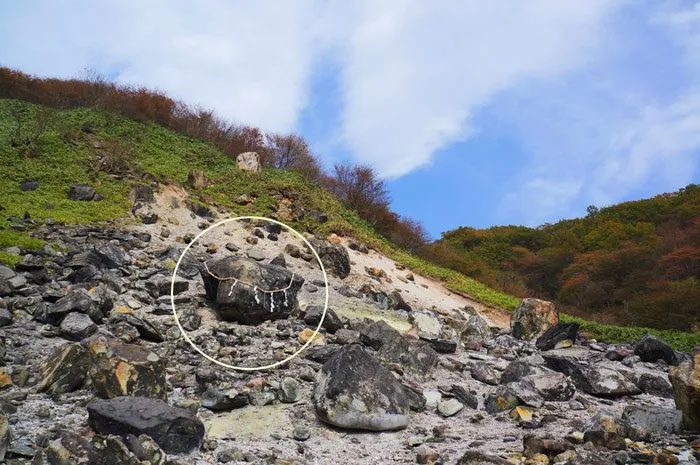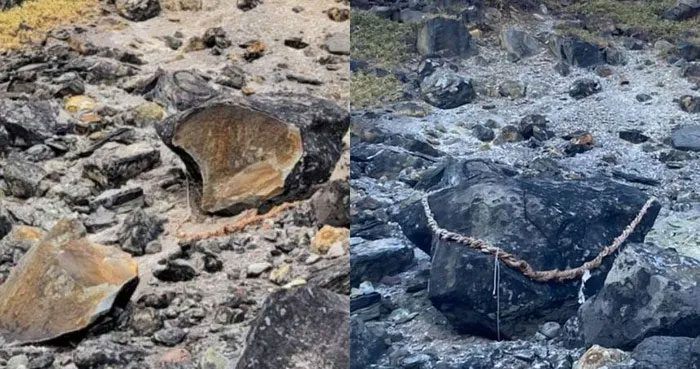A “death stone” discovered in Tochigi Prefecture, Japan, has been found cracked in half, raising suspicions that the nine-tailed fox trapped inside has broken free.
Across the globe, there are many different folklore tales. In Japan, there is a stone known as “death stone”, which is said to seal the powerful nine-tailed fox (known as kyūbi no kitsune), a mythical creature with immense magical abilities.
Due to the seal on the nine-tailed fox, the death stone continuously emits toxic fumes that can harm humans and even affect flying insects. Recently, however, some individuals discovered that the death stone in Tochigi Prefecture had cracked in half, leading to suspicions that the nine-tailed fox trapped inside had managed to break the seal and escape.

The famous death stone in Tochigi Prefecture, Japan.
Specifically, a Japanese netizen with the nickname @Lily0727K posted on Twitter, stating that he visited the death stone at a scenic spot in Tochigi. To his surprise, the stone known as the seal of the nine-tailed fox was cracked in two. In the photo attached by @Lily0727K, the death stone is indeed split, and the straw rope used to ward off evil spirits was also broken. Due to the legend surrounding the death stone, this information quickly sparked lively debates among netizens.
Some users attached photos as proof, noting that when they visited the site last December, the death stone was intact, and the inscriptions on it were normal. The priests of the temple revealed that the last time the death stone was broken was 637 years ago (during the Southern and Northern Dynasties). At that time, a high monk named Nanboku-cho used his powers to purify and exorcise. After the purification, the death stone shattered, and its fragments scattered across various parts of Japan.

The cracked ‘death stone’ causes confusion.
In Japanese folklore, the nine-tailed fox is often depicted with a white face and golden hair, capable of transforming into beautiful women to seduce kings. Legendary figures such as Daji, Baozi, and the concubine of Prince Bintosara of India are considered to be incarnations of the nine-tailed fox. Later, the nine-tailed fox followed a Tang Dynasty envoy to Japan, transforming into an extraordinary beauty named Tamamo-no-Mae to captivate Emperor Konoe.
However, the famous onmyoji Abe no Seimei saw through the fox’s true identity and banished it from the palace. Shortly after, the emperor sent an army of 80,000 soldiers to Nasu Highlands in Shimono (present-day Tochigi Prefecture) to conquer the nine-tailed fox, ultimately leading to its demise.
Nevertheless, the spirit of the nine-tailed fox did not dissipate and was sealed within the stone, which locals referred to as the death stone. It wasn’t until 200 years later that a high monk managed to purify this resentment, but in doing so, he shattered the death stone into many pieces that scattered across Japan.
Despite the famous folklore surrounding the nine-tailed fox in Japan, experts have concluded through research and analysis that the death stone is actually just a type of toxic volcanic rock. Its danger lies in its proximity to the volcanic crater, containing hydrogen sulfide, sulfur dioxide, and high levels of arsenic, which can lead to illness or death in organisms that come into contact with it.
Therefore, the cracking of the death stone does not make it any more dangerous.



















































